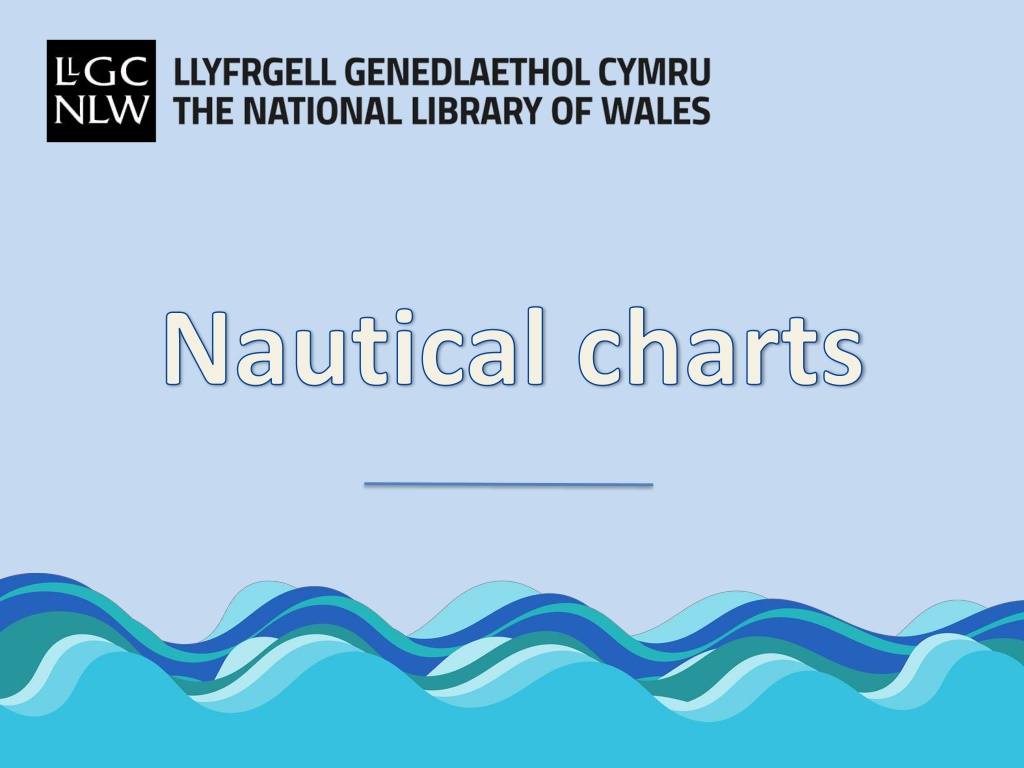Exploring Historical Nautical Charts and the Evolution of Seafaring
Discover the significance of nautical charts through history, from the essential information they provide sailors to the evolution of mapping technology. Learn about the challenges faced by early cartographers like Lewis Morris and how their work continues to offer valuable insights into past maritime landscapes.
Download Presentation

Please find below an Image/Link to download the presentation.
The content on the website is provided AS IS for your information and personal use only. It may not be sold, licensed, or shared on other websites without obtaining consent from the author. Download presentation by click this link. If you encounter any issues during the download, it is possible that the publisher has removed the file from their server.
E N D
Presentation Transcript
Nautical charts The National Library of Wales has a large collection of nautical charts. They are used to help at sea. What kind of information do you think should be recorded on a nautical map?
Nautical charts Nautical charts should give sailors up to date information about Coast lines Current direction Underwater rocks Underwater wrecks Different depths
Nautical charts Before the invention of navigation technology such as radar, nautical charts were the best navigation tool available. Sailors would write and add any changes on the charts themselves if they were incorrect. Why do you think that might be?
Nautical charts Nautical charts were much less likely to survive than normal charts. Charts would be thrown away if out of date of damaged. Charts that have survived can give us a lot of historical information. They can tell us how the coastline and even the land might have changed over time.
ABERYSTWYTH COASTLINE TODAY ABERYSTWYTH COASTLINE IN 1748
Nautical charts The first sea atlas was published in 1584 (434 years ago). How do you think nautical charts would have been created, over 400 years ago? A little clue How would depth have been measured?
Nautical charts Sounding Lines 400 years ago they used a sounding line to measure. The sea depth is measured in fathoms. Sea floor
Lewis Morris (1701 1765) There were not many up to date charts of the Welsh coast at this time and the roads were terrible! To the rescue came land surveyor, Lewis Morris.
Lewis Morris (1701 1765) Born in Anglesey, he would often see ships wrecked and hear of lives lost at sea. This inspired Lewis Morris to create a map of the Welsh coast. He taught himself, and received no official help!
Lewis Morris (1701 1765) 1748 published charts of coast from Llandudno to Milford Haven. His charts included a lot of new information Harbours & Bays Low-lying ground Dangers Areas to anchor Causeways Roads & rivers
Lets have a look at some of the symbols used on sea charts to show information
Compass rose Pier Underwater rock River Buoy Safe anchor point Sand Foul ground / Difficult to anchor Current Mountains / hills Church Marsh




























